What are Geosocial Segments?
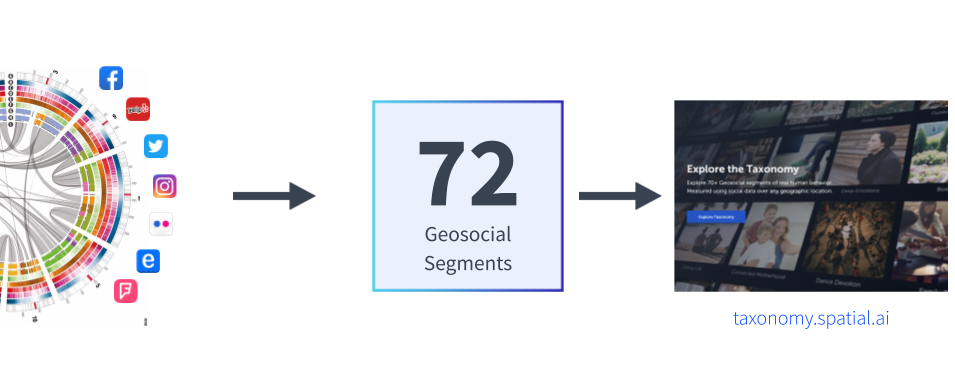
From Spatial.ai: “Geosocial data is simply location-based social media data. It is media content (mostly text) produced by people on social platforms that is tied to specific locations with public geotags. This type of data is publicly available on nearly every major social platform including Twitter, Instagram, Flickr, event platforms, review sites, etc.
The richness of Geosocial data comes from the constant stream of content people post on social media — content like thoughts, feelings, interests, events, and activities. Communication combined with location information is the essence of Geosocial data.”
Methodology
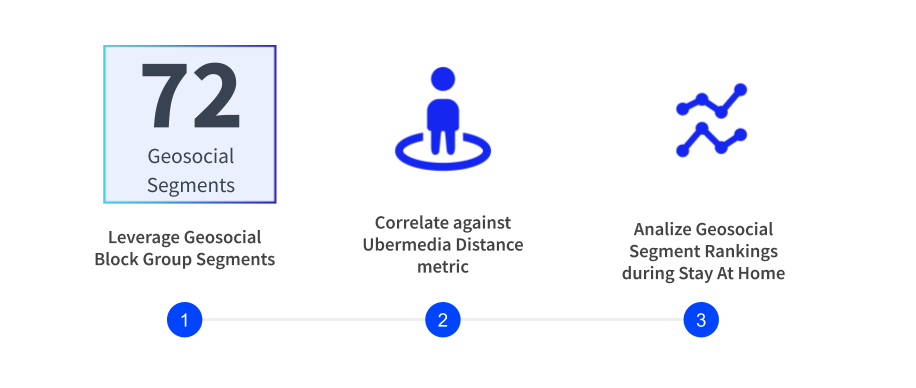
By combining Spatial.ai’s geosocial blog group segments with Azira’s social distancing metrics, we are able to evaluate whether communities’ interests and attitudes are any indication of whether or not they will be compliant with stay at home orders.
Ranking the best and worst segments at following stay at home orders

Each segment was ranked on a spectrum of percent distance traveled, from negative to positive. Negative means they were less likely to follow stay at home orders and traveled more. Positive means they were more likely to follow stay at home orders and traveled less.
Results
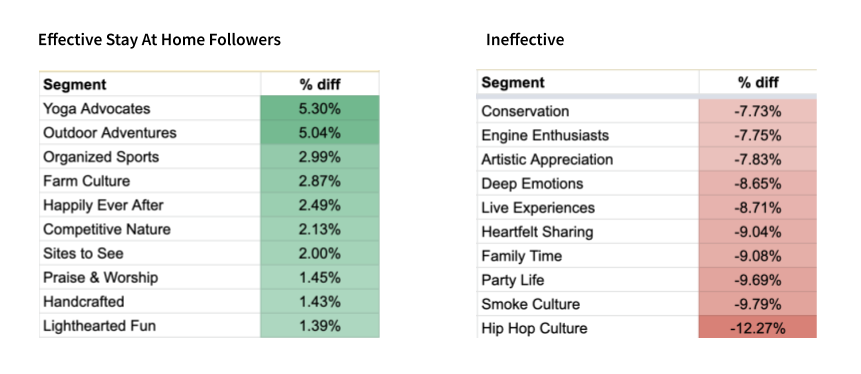
Above is a comparison of effective stay at home followers and ineffective stay at home followers. On average people from block groups dominant with Yoga Advocate activity traveled 5.30% less than average.
Effectives stay at home themes

From a policy & analytics perspective you may want to look at what the common threads are that hold these together.
Perhaps it is that these segments are slightly older than average. Farm Culture & Praise and Worship match that description. While this is true on the whole, segments like Organized Sports, Competitive Nature and Lighthearted Fun buck the trend.
Another hypothesis is that these represent higher-income areas. Overall that is true but there are some surprising ones here: LGBTQ Culture, Wine Lovers, And Wealth Signaling are surprisingly missing – all very high-income segments. Whereas we have Praise and Worship which is not correlated with high income in Georgia. With this in mind, it seems there is something more to the story.
One thing that is true throughout, is that these tend to be healthier segments. In another separate study of health complications at hospitals and emergency centers Spatial.ai found that many of these variables had a negative correlation with adverse outcomes. So we know that these people are more health conscious – but why might that be?
Lets see if we can find that out by looking at the contrast of segments that are ineffective social distancers.
Ineffective stay at home themes
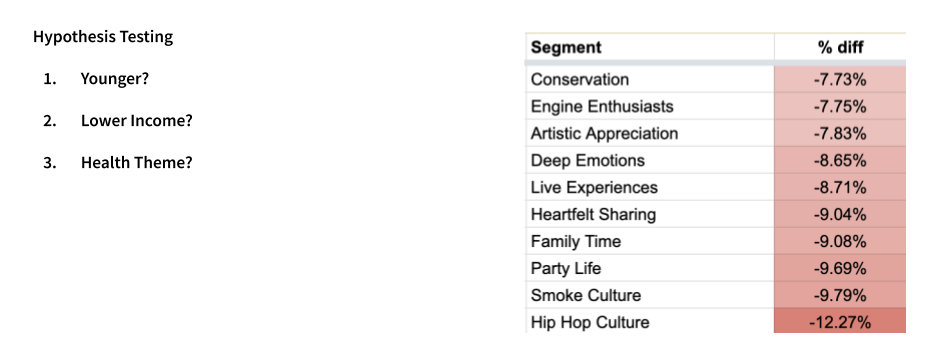
A few of these do trend a little younger, especially the bottom six. However, Spatial.ai’s two youngest segments don’t even show up, Bookish & Student Life.
Again there is a health theme here in that a lot of these segments have a statistical relationship with adverse health outcomes. Deep Emotions are generally people that are depressed, and Heartfelt Sharing is essentially people who have gone through a break up or relationship troubles.
Lower income might make sense here, but there is obviously one that sticks out as a sore thumb – which is Family Life.
Family Life: an ineffective stay at home theme
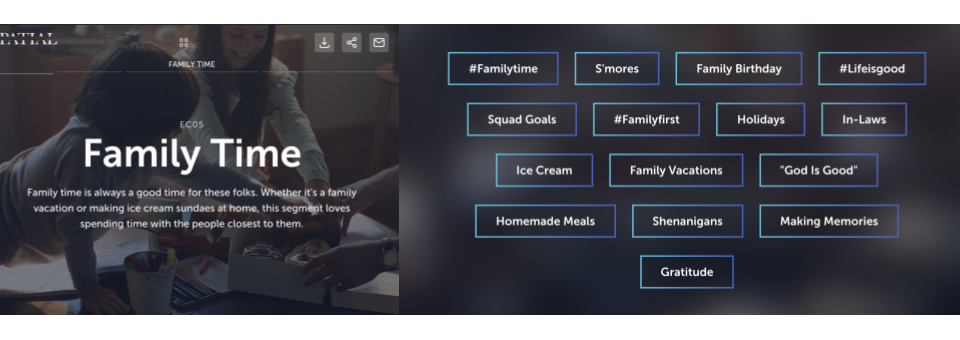
As we can see, here are a few words used by the Family Time segment that are striking: Family Birthday and In-Laws. Now we get a sense as to why areas that are high in family time may be less effective at staying at home. These people are used to going out and visiting their families and are longing for that social connection.
And that is a clue to the common thread that holds all of these together.
The stay at home common thread: internal vs external fulfillment

Effective social distancers have the unique capability of finding fulfillment internally. Yoga, worship, etc are all examples of people finding fulfillment internally. In contrast, the ineffective social distancers find fulfillment socially, like through partying, family time, and hip hop culture.
Implications

This data can provide policy makers with an exhaustive list of behaviors within a city to encourage or discourage certain behaviors in order to make a city more resilient against COVID-19
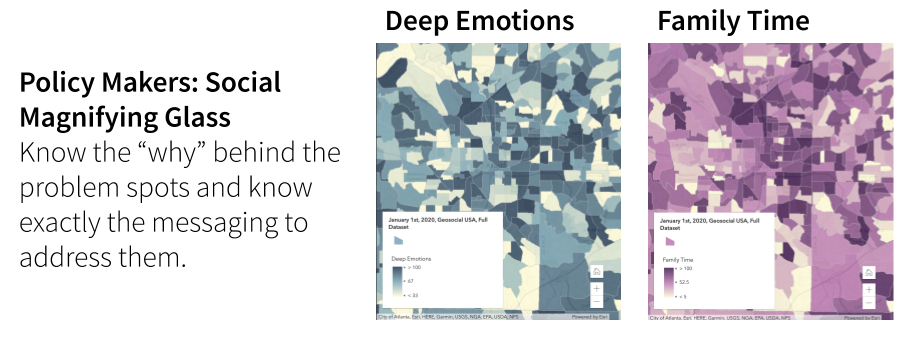
Using this metric, researchers and municipalities can look at why these communities are not social distancing well and calibrate their policies and messaging to be even more effective.
To learn more about Spatial.ai and their geosocial segment data, please visit https://spatial.ai/




